Overview
Successful winery websites are characterized by essential features that drive user engagement and foster customer loyalty. These include:
- Personalized marketing
- Responsive design
- E-commerce integration
- Compelling storytelling
- SEO strategies
- Engaging content
- Social media integration
- Customer reviews
- Wine club memberships
- Analytics tools
Collectively, these elements enhance the user experience, streamline the purchasing process, and are crucial for wineries striving to thrive in a competitive market. By implementing these strategies, wineries can not only attract but also retain customers, ensuring long-term success in the industry.
Introduction
The wine industry is undergoing a transformative shift, as wineries increasingly acknowledge the critical importance of a robust online presence. With direct-to-consumer sales emerging as a vital revenue stream, the design and functionality of winery websites are essential in attracting and retaining customers. This article delves into nine essential features that can elevate winery websites from mere digital brochures to powerful sales tools. What challenges do wineries encounter in implementing these strategies, and how can they ensure their online platforms effectively engage a modern audience?
Enocap: Direct-to-Consumer Sales Optimization
Enocap is at the forefront of empowering vineyards to optimize their direct-to-consumer (DTC) sales channels—an essential strategy for enhancing profit margins and cultivating a loyal clientele. By implementing tailored strategies, wineries can significantly enhance client engagement on their winery websites while streamlining the purchasing process. Key tactics encompass:
- Personalized marketing efforts that resonate with consumers by utilizing client data for targeted promotions on winery websites.
- Creating seamless online shopping experiences.
This comprehensive approach not only drives sales but also fosters long-term loyalty among customers. Notably, 70% of vineyards anticipate sales growth exceeding 5% in the next five years, underscoring the potential of effective DTC strategies. Furthermore, with 47 states and D.C. permitting DTC shipping, producers are strategically positioned to capitalize on this expanding market.
Industry leaders stress the importance of adapting to consumer preferences, with flexible subscription models and engaging online experiences becoming crucial for attracting younger demographics. As the wine sector continues to evolve, utilizing winery websites to adopt innovative DTC sales strategies will be vital for producers aspiring to thrive in a competitive landscape. Additionally, Enocap's expertise in strategic capital planning ensures that family-owned vineyards secure the right partners and resources for sustainable growth.
To maximize your establishment's potential, consider and exploring capital planning options with Enocap.
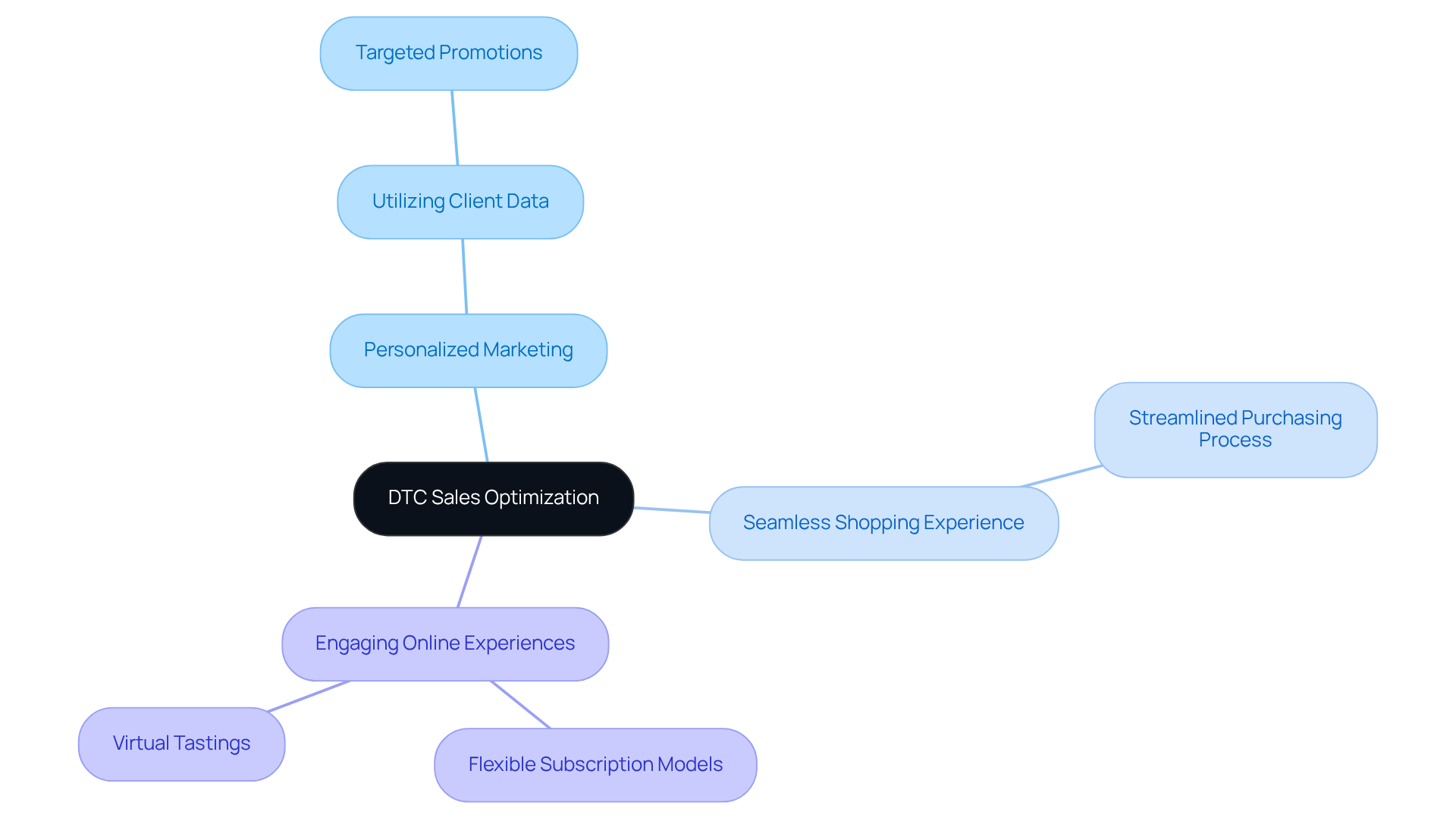
Responsive Design: Mobile-Friendly User Experience
A responsive design is not just beneficial but essential for winery websites. It allows these sites to adjust effortlessly to various screen sizes—smartphones, tablets, and desktops—thus enhancing user satisfaction. This adaptability is crucial, as it significantly ; Google prioritizes mobile-friendly sites. In fact, over 60% of web traffic now originates from mobile devices, underscoring the necessity for vineyards to adopt responsive design.
Key elements such as:
- Fluid grids
- Flexible images
- CSS media queries
work in unison to ensure the layout adapts according to the device's screen size. Implementing these features can lead to a remarkable increase in e-commerce order volume, with wine producers witnessing a 153% growth during market expansions. Moreover, mobile optimization has been demonstrated to reduce bounce rates by 40%, indicating that users are more likely to engage with a well-designed site. As vineyards strive to enhance their online visibility, emphasizing responsive design on winery websites is crucial for driving traffic and elevating sales.
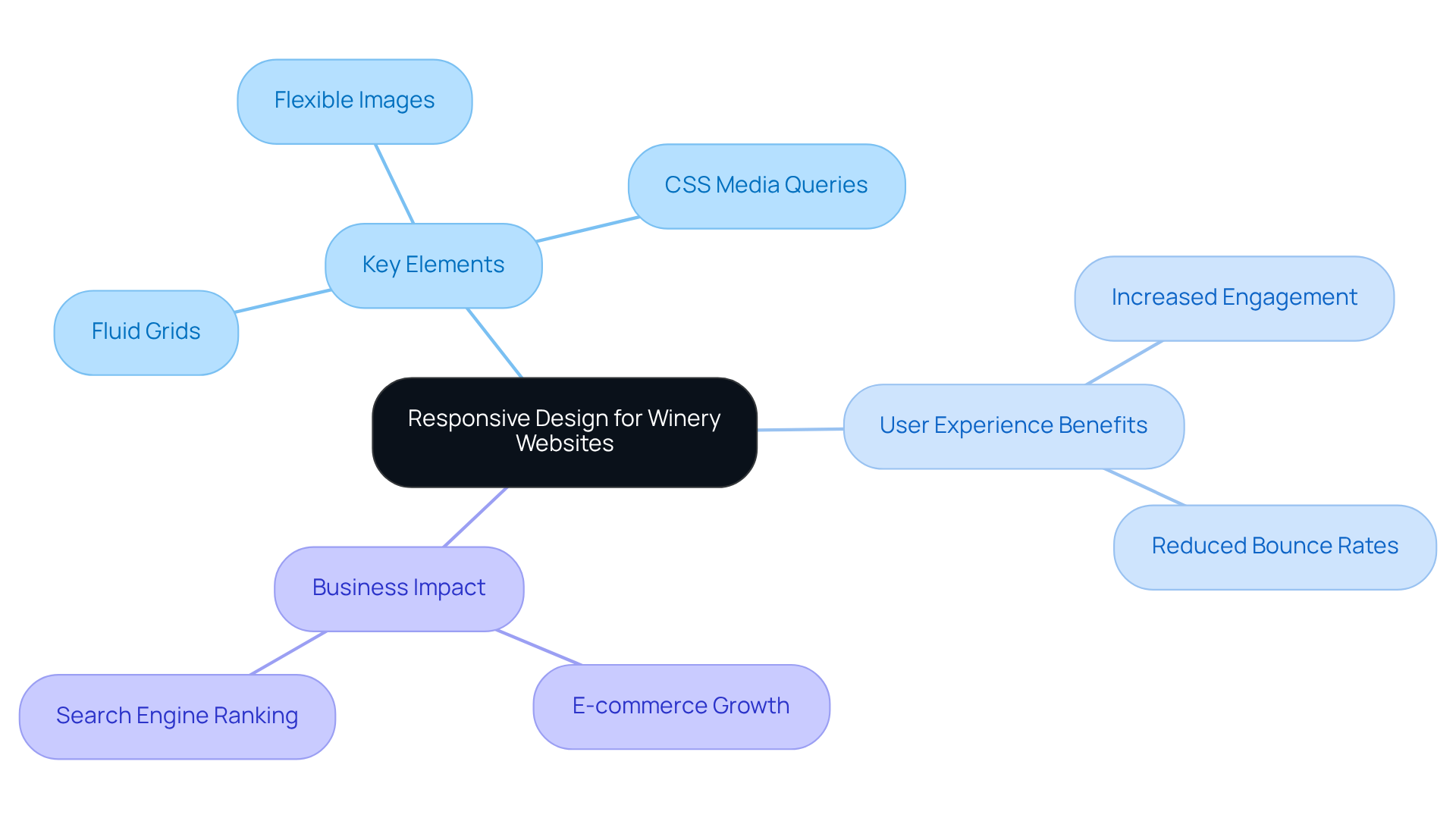
E-Commerce Integration: Seamless Online Sales
Incorporating e-commerce features into winery websites is not just beneficial; it is essential for establishing a seamless shopping experience. Customers must be able to effortlessly browse products, add items to their cart, and complete purchases with ease. Key features that enhance this experience include:
- Secure payment gateways
- Intuitive navigation
- Detailed product descriptions that engage potential buyers
Notably, establishments that have adopted e-commerce have experienced an impressive 153% rise in order volume during market expansions, underscoring the effectiveness of these strategies.
Moreover, adopting innovative DTC strategies, such as subscription services or beverage clubs, can significantly enhance customer loyalty and promote repeat purchases. This trend is evidenced by the anticipated expansion of and curated vineyards, which are vital for wineries aiming to thrive in a competitive market. As the wine industry continues to evolve, embracing these e-commerce trends will be crucial.
As Nate Westfall emphasizes, "Staying on top of technology is not optional; it’s a requirement for reaching customers in every corner of the country (and doing so profitably)." This statement encapsulates the urgency for wineries to adapt and innovate in their approach to e-commerce.
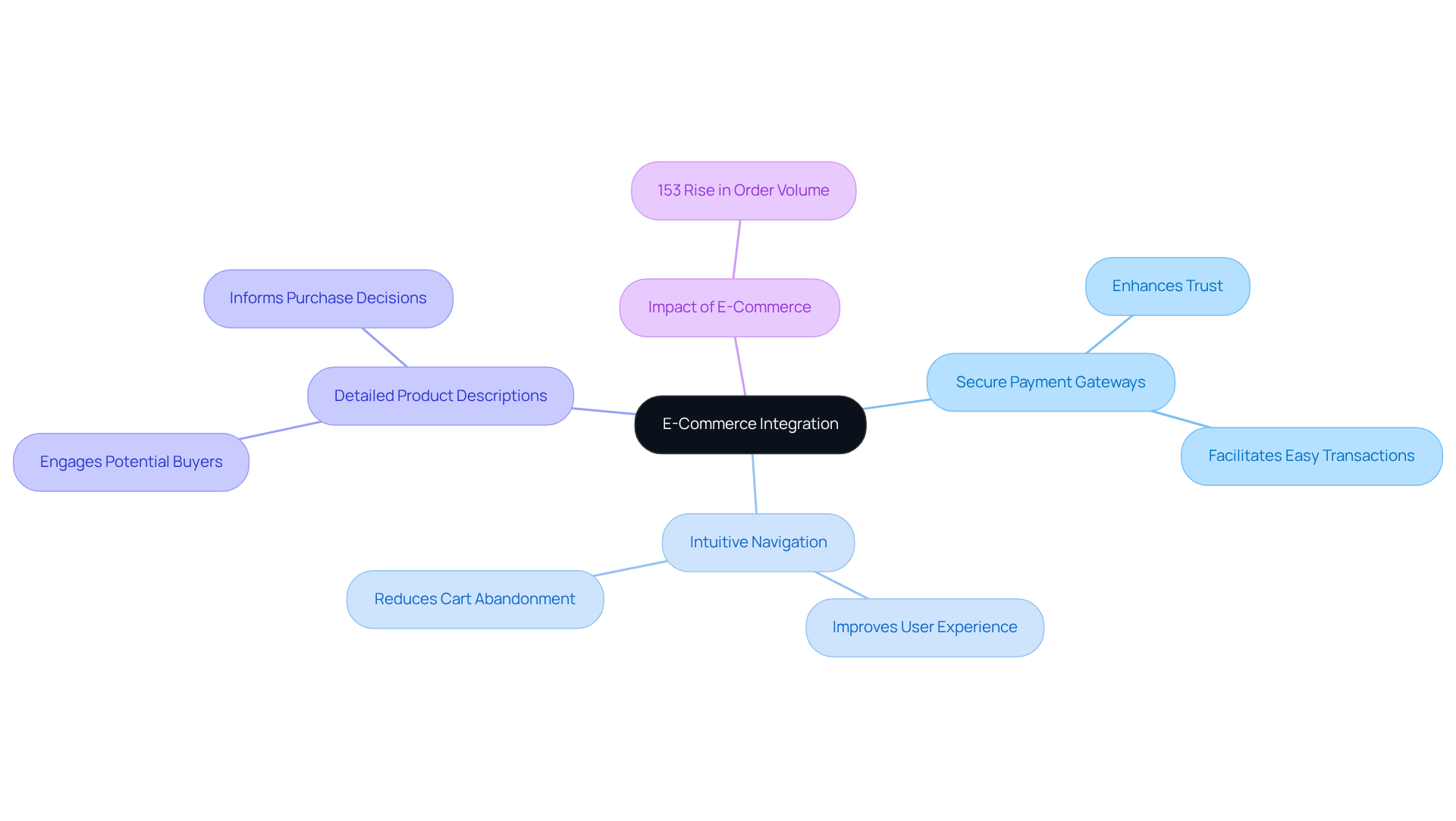
Compelling Storytelling: Building Brand Connection
Wineries can significantly enhance consumer engagement by leveraging storytelling to convey their unique heritage, winemaking processes, and the passion that drives their craft. This can be effectively executed through a variety of engaging website content formats, such as videos, blog posts, and interactive elements that invite visitors to delve into the establishment's narrative. By crafting an engaging narrative that connects with consumers, wineries can establish a deeper emotional bond, fostering loyalty and encouraging repeat visits.
Current trends suggest that consumers are increasingly attracted to genuine stories that represent a company's values and mission. For instance, companies that share both their successes and challenges can humanize their narrative, making them more relatable. This method not only improves consumer engagement but also fosters trust, as individuals value honesty and vulnerability in brand stories.
Successful examples in the wine industry illustrate the power of storytelling. Wineries that effectively and the people behind their products often see increased customer loyalty. For instance, a vineyard that shares the journey of its founding family or the unique characteristics of its estate can create a memorable experience that resonates with visitors.
Experts emphasize that storytelling should be a cornerstone of a vineyard's marketing strategy. As mentioned, "Individuals do not purchase what you offer; they purchase the reasons behind it," emphasizing the significance of communicating the fundamental motivations driving the company. Moreover, integrating archetypes can assist vineyards in personifying their identity and connecting emotionally with clients. By crafting narratives that evoke emotions and connect with consumers on a personal level, wineries can differentiate themselves in a competitive market and cultivate lasting relationships with their audience.
Moreover, maintaining consistency in narrative across various marketing channels is crucial for building trust and recognition among consumers. Statistics indicate that 80% of adult consumers desire companies to tell stories, reinforcing the demand for genuine narratives in marketing strategies. However, vineyards must also navigate challenges in genuine storytelling, such as identifying a distinctive narrative and overcoming the fear of vulnerability. Addressing these challenges can lead to more effective and relatable narratives, ultimately enhancing growth and loyalty in the wine industry.
In addition to storytelling, vineyards should consider strategic capital planning to support their growth initiatives. This includes evaluating options for debt, equity, or acquisition opportunities that align with their brand narrative and long-term vision. By combining storytelling with strategic capital planning, vineyards can develop a cohesive strategy that not only captivates consumers but also fosters sustainable growth.

SEO Strategies: Enhancing Online Visibility
Implementing robust SEO strategies is essential for vineyards aiming to improve their winery websites and enhance their online presence. By conducting thorough keyword research, vineyards can identify the relevant terms that prospective clients are actively searching for. This foundational step allows for the optimization of winery websites' content, ensuring that these keywords are seamlessly integrated throughout the winery websites. Furthermore, it is crucial to align all technical aspects of the website with SEO best practices, thereby maximizing search engine visibility.
In addition to general SEO strategies, a concentrated effort on local SEO is vital for attracting nearby clients. Utilizing tools such as and local listings significantly enhances visibility within the community. This targeted approach not only draws in local patrons but also establishes the vineyard as a prominent choice in the region. By prioritizing these strategies, vineyards can effectively position themselves to capture the attention of their desired audience and drive meaningful engagement.
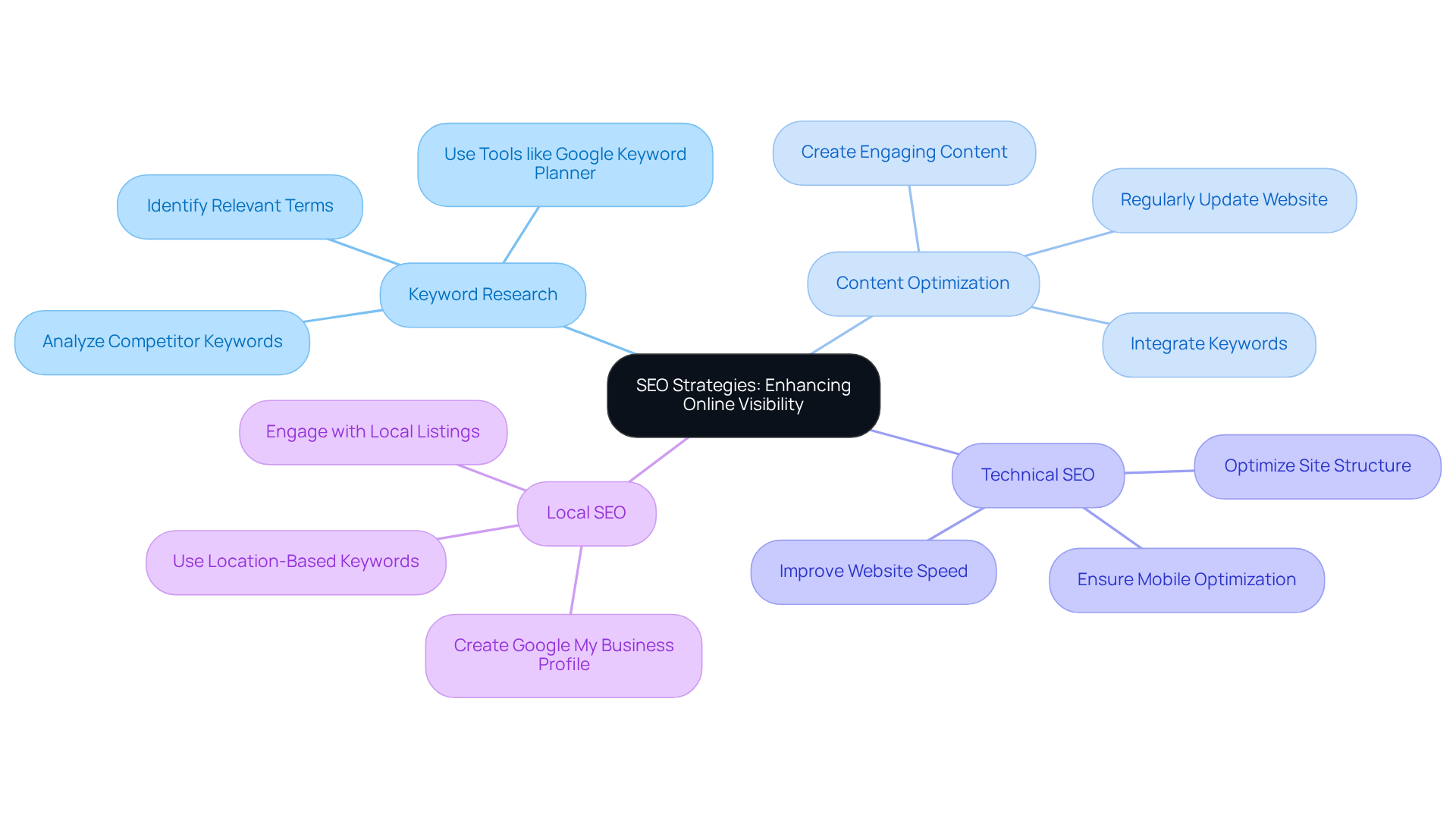
Blog Section: Engaging Content for Visitors
Incorporating a blog into winery websites serves as a powerful tool for sharing informative and engaging content, including:
- Wine pairing tips
- Vineyard updates
- Behind-the-scenes stories
This method not only enhances SEO but also positions the establishment as a knowledgeable authority in the industry, aligning with Enocap's mission to craft compelling narratives that resonate with consumers. Frequently updated blog entries can greatly improve client engagement, promoting return visits and social sharing, which is essential for converting casual purchasers into devoted club members.
In fact, small businesses that blog experience a 126% increase in lead growth compared to those that do not. Additionally, blogging can increase website traffic by 55%, and B2C blog content receives 9.7 times more shares, further emphasizing the effectiveness of engaging content.
By concentrating on high-quality, relevant content, winery websites can help vineyards draw more visitors and cultivate a loyal customer base, ultimately boosting sales and improving their market presence. To maximize these benefits, wine producers should aim for blog posts between 750 to 2000 words and consider incorporating unique images or infographics, which can by up to 650%. This strategic approach not only enhances growth but also supports the long-term sustainability of family-owned vineyards.

Social Media Integration: Expanding Brand Reach
Incorporating social media into winery websites is not just beneficial; it is essential for engaging with audiences on platforms where they are already active. By embedding social media feeds directly on winery websites and encouraging visitors to follow their profiles, wineries can significantly enhance their online presence and foster a sense of community. This approach not only boosts visibility but also encourages interaction and loyalty among consumers, transforming casual buyers into devoted club members.
Furthermore, sharing user-generated content (UGC) serves as a powerful strategy; it adds authenticity to the brand and broadens its reach, aligning with the storytelling aspect that resonates deeply with consumers. Hosting social media contests can further enhance engagement, attracting new clients while motivating current ones to participate actively.
Statistics reveal that wine-related content on social media garners 40% higher engagement rates than average posts, as reported by Hootsuite. Additionally, establishments with winery websites that effectively utilize social media can experience a substantial increase in brand recognition and customer loyalty, making it a crucial component of modern marketing efforts.
As Jen Stamulis, Director of Business Development & Brand Management at Elasticity, asserts, 'Social media for vineyards isn’t just an option—it’s a necessity.' To maximize these benefits, producers should consider implementing a dedicated social media management tool to streamline their engagement efforts and support for sustainable growth.
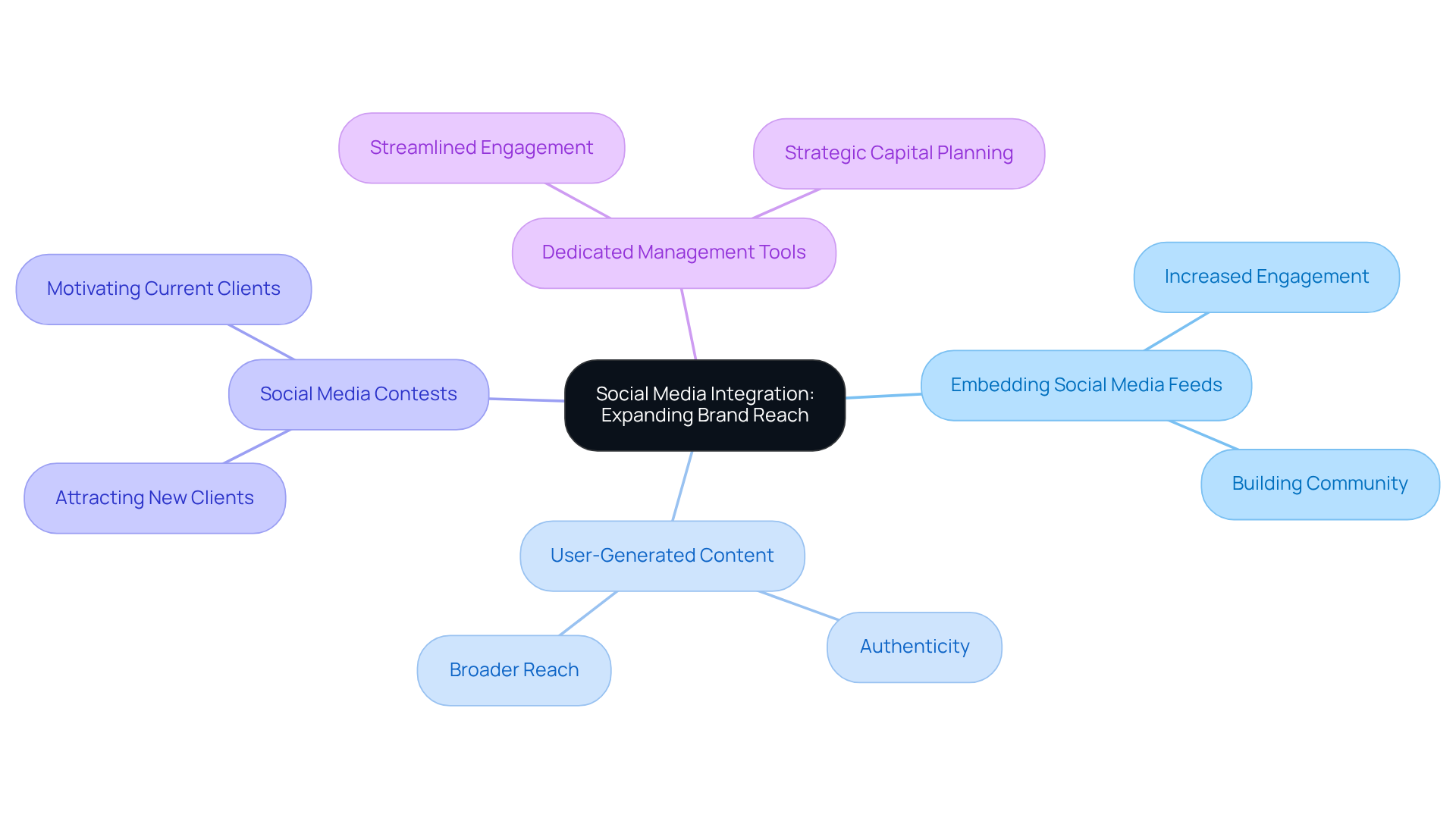
Customer Reviews: Building Trust and Credibility
Prominently showcasing client feedback on vineyard sites is crucial for establishing trust and credibility—elements that are essential for converting casual purchasers into dedicated club members. Wineries must actively encourage to share their experiences, presenting these testimonials as powerful social proof that can significantly sway potential buyers. In fact, research shows that 90% of consumers consult online reviews prior to making a purchase, underscoring the pivotal role of positive feedback in the decision-making process.
To effectively increase the volume of testimonials, vineyards can implement strategic initiatives such as:
- Follow-up emails soliciting reviews post-purchase
- Offering incentives for feedback
Additionally, addressing both positive and negative feedback demonstrates a vineyard's commitment to client satisfaction, fostering a sense of community around the brand. By prioritizing audience interaction and highlighting genuine experiences, vineyards can forge enduring connections with their patrons. This, in turn, not only boosts sales and loyalty but also strategically positions the vineyard for long-term success.
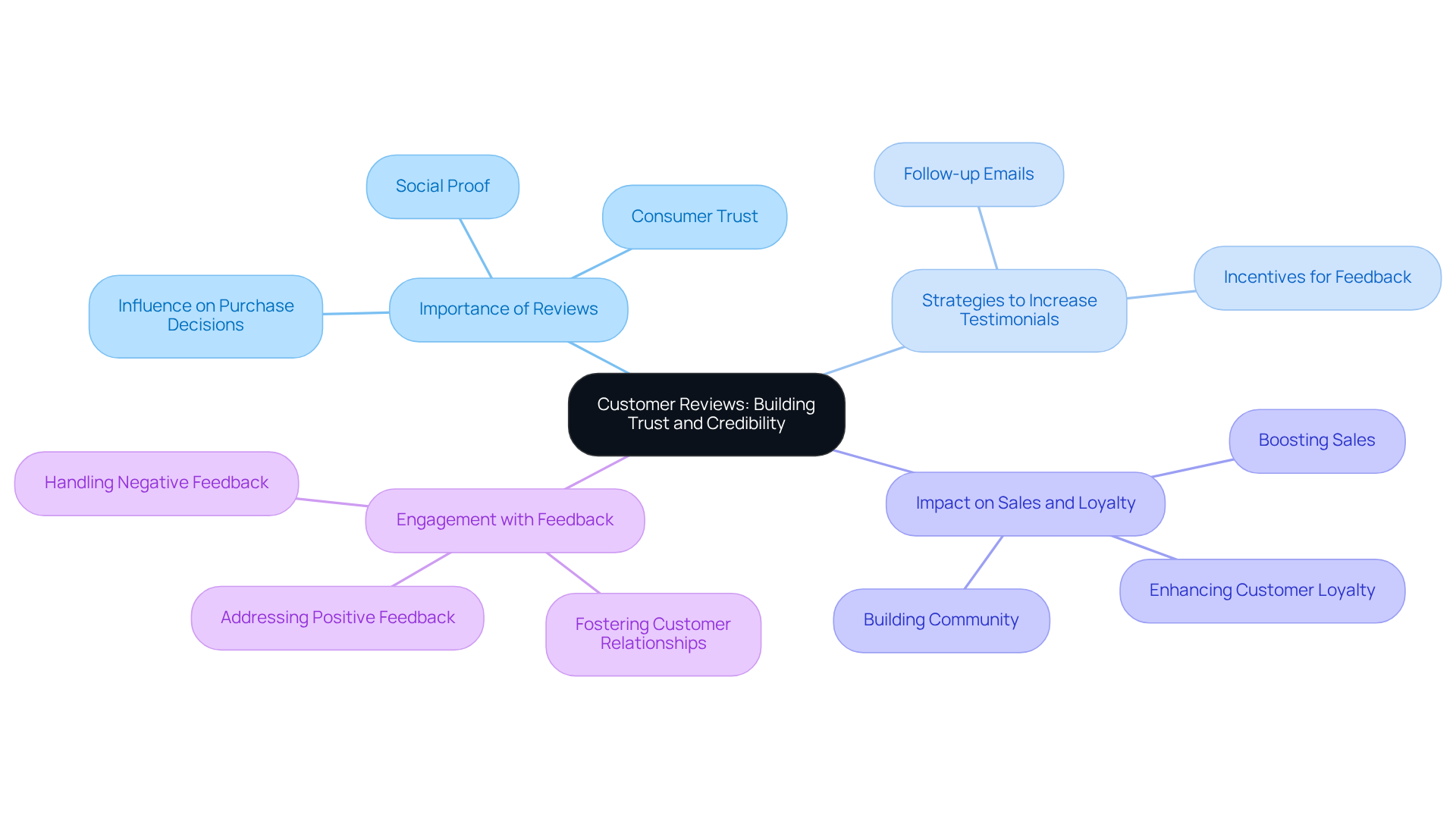
Wine Club Membership: Fostering Customer Loyalty
Establishing a beverage club membership program is a strategic move that enables producers to cultivate a dedicated customer base while offering unique advantages that enhance loyalty. Members frequently value benefits such as access to limited-edition beverages, discounts on purchases, and invitations to exclusive events. Notably, statistics reveal that beverage clubs now account for 30% of total sales for American producers, surpassing traditional tasting room sales for the first time. This shift underscores the growing significance of beverage clubs within the industry.
To maintain member engagement, personalized experiences and consistent communication are essential. Wineries that emphasize tailored interactions witness a marked increase in retention rates. For example, Edio Vineyards' innovative flexible membership model has led to a significantly lower cancellation rate compared to conventional structures. Furthermore, 68% of vineyards in Napa and the Pacific Northwest express optimism regarding the expansion of direct-to-consumer sales, indicating a positive trend in patron loyalty through clubs.
Expert insights indicate that fostering loyalty through wine clubs entails creating a sense of community and belonging. By offering customized suggestions and unexpected gifts, vineyards can strengthen members' emotional connections to their brands. This approach not only boosts client satisfaction but also , as members feel valued and engaged beyond mere transactions. As the wine sector evolves, establishing a robust wine club can be a pivotal strategy for producers aiming to thrive in a competitive market.
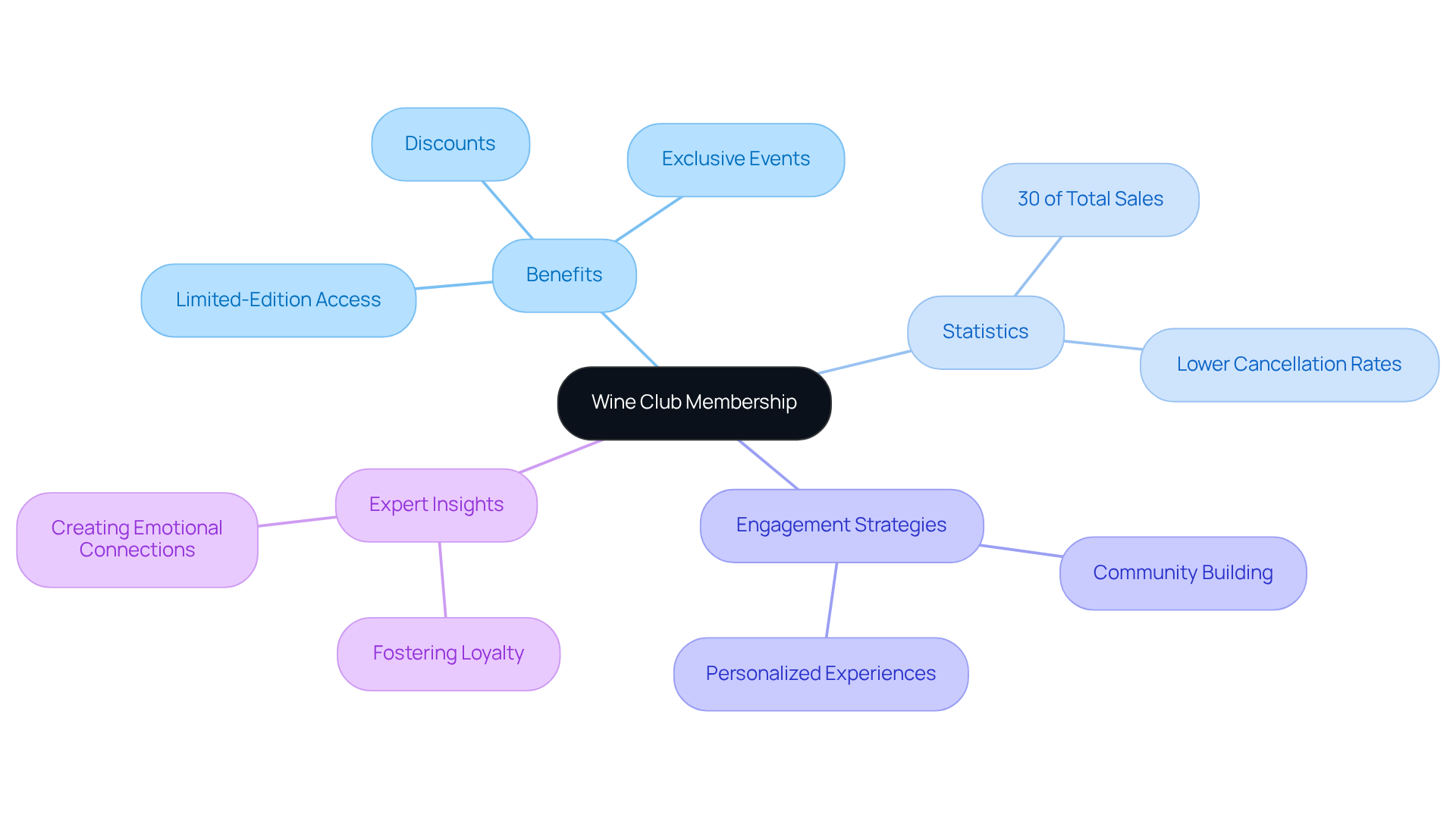
Analytics Tools: Data-Driven Insights for Improvement
Employing analytics tools is essential for vineyards aiming to monitor key performance indicators (KPIs) related to their winery websites, such as website traffic, conversion rates, and client demographics. By delving into this data, vineyards can uncover valuable trends, refine their marketing strategies, and make informed decisions that enhance customer experiences.
For example, the average email conversion rate is projected to rise from 2.1% in 2020 to 7.2% by 2025, underscoring the effectiveness of targeted email campaigns driven by data insights. Furthermore, analytics can facilitate strategic capital planning by identifying areas for investment and growth, ensuring businesses are well-positioned for future opportunities.
Consistently examining analytics reports enables vineyards to adapt to changing consumer preferences and improve their brand narratives, ultimately transforming casual buyers into devoted club members. As Alex Caffarini, founder and president of CompassDTC, aptly states, "You don’t need fancy technology to apply analytics, just clarity about what you’re trying to achieve."
In a shifting industry landscape, leveraging from winery websites is essential for wineries to remain competitive and responsive to market dynamics, aligning with the transformative goals set forth by Enocap.
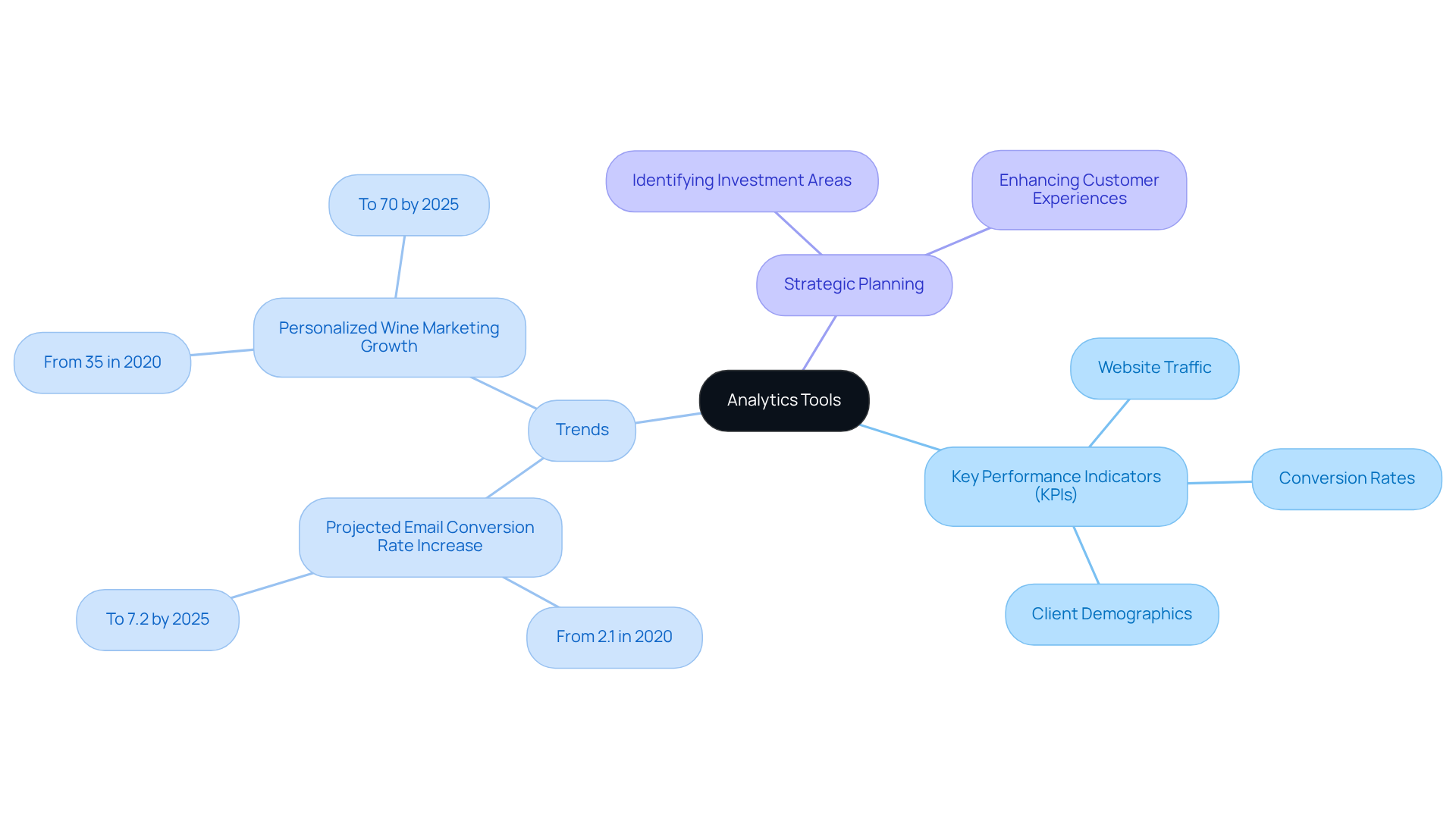
Conclusion
The success of winery websites is fundamentally rooted in a meticulously curated amalgamation of essential features that not only elevate user experience but also drive sales and cultivate customer loyalty. By prioritizing direct-to-consumer sales optimization, responsive design, e-commerce integration, and compelling storytelling, wineries can forge engaging online platforms that resonate profoundly with their audience. These elements are indispensable for establishing a formidable online presence and navigating the competitive landscape of the wine industry.
Key strategies highlighted include the critical role of personalized marketing, seamless shopping experiences, and the integration of social media to foster community and trust. Furthermore, the implementation of robust SEO practices and the maintenance of an engaging blog can substantially enhance visibility and customer engagement. Wineries that harness analytics tools to glean insights into customer behavior and preferences will be strategically positioned to adapt and flourish in a rapidly evolving market.
Ultimately, the pivotal takeaway for wineries is to wholeheartedly embrace innovation and adaptability within their online strategies. By prioritizing these essential features, wineries can not only amplify their sales potential but also nurture a loyal customer base that appreciates their unique stories and offerings. As the wine industry continues to evolve, it is imperative for producers to invest in these strategies to secure their market position and foster sustainable growth.
Frequently Asked Questions
What is Enocap and how does it help vineyards?
Enocap empowers vineyards to optimize their direct-to-consumer (DTC) sales channels, enhancing profit margins and cultivating a loyal clientele through tailored strategies that improve client engagement and streamline the purchasing process.
What are some key tactics Enocap recommends for wineries?
Key tactics include personalized marketing efforts using client data for targeted promotions, creating seamless online shopping experiences, and adopting flexible subscription models to attract younger demographics.
What percentage of vineyards expect sales growth in the next five years?
70% of vineyards anticipate sales growth exceeding 5% in the next five years, highlighting the potential of effective DTC strategies.
Why is responsive design important for winery websites?
Responsive design is essential as it allows winery websites to adjust to various screen sizes, enhancing user satisfaction and boosting search engine rankings. Over 60% of web traffic now comes from mobile devices, making mobile-friendly sites crucial.
What are the key elements of responsive design?
Key elements include fluid grids, flexible images, and CSS media queries, which work together to ensure the website layout adapts according to the device's screen size.
How does mobile optimization impact e-commerce for wineries?
Mobile optimization can lead to a significant increase in e-commerce order volume, with wine producers experiencing a 153% growth during market expansions, and it also reduces bounce rates by 40%, encouraging user engagement.
What features should wineries incorporate for a seamless online shopping experience?
Essential features include secure payment gateways, intuitive navigation, and detailed product descriptions to enhance customer engagement and ease of purchase.
What trends are emerging in the wine industry regarding customer loyalty?
Innovative DTC strategies, such as subscription services and beverage clubs, are becoming vital for enhancing customer loyalty and promoting repeat purchases in the competitive wine market.
What does Nate Westfall emphasize about technology in the wine industry?
Nate Westfall emphasizes that staying on top of technology is not optional; it is a requirement for wineries to reach customers profitably across the country.




